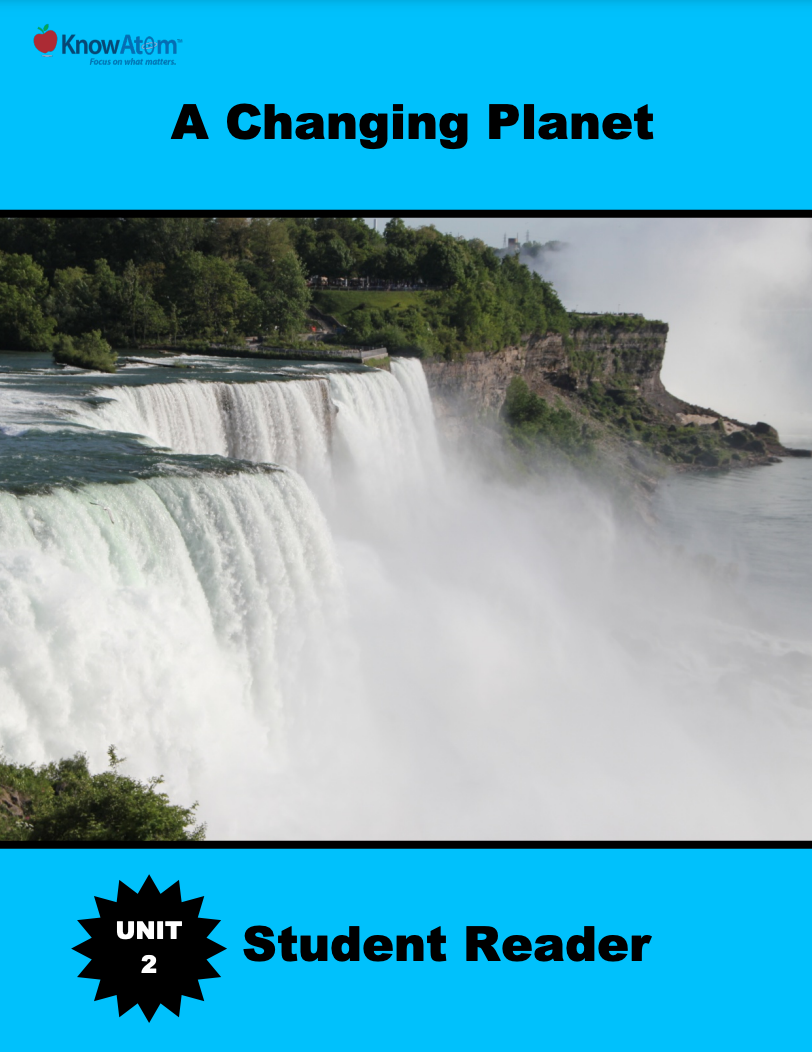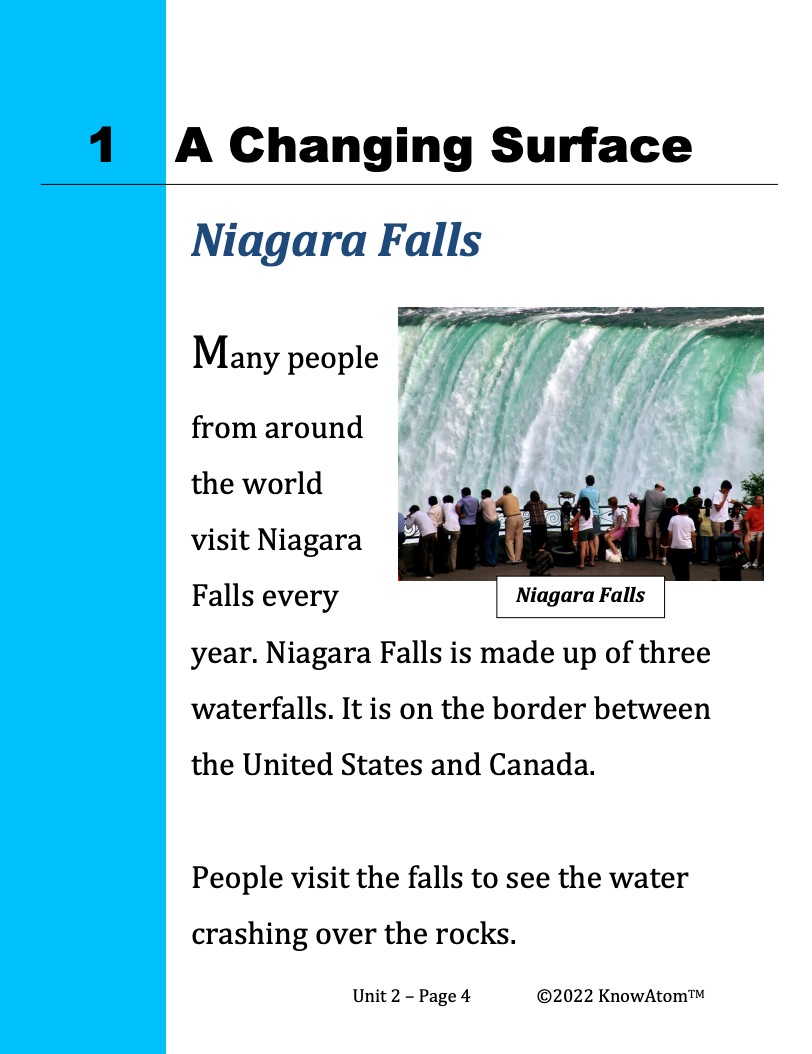
In the last unit, students explored the properties of different kinds of matter, connecting a material’s properties with the functions for which it is used. In this unit, students focus on Earth materials and the science phenomena of processes that change them (specifically weathering and erosion).

In this unit, students explore the science phenomena of different processes that change Earth’s surface over time. Once students have investigated how wind and water change the shape of the land, they use their scientific knowledge to engineer a solution that prevents rainwater from washing away a sandy hillside. This page showcases key components of this lesson.
.png)
In this unit, students focus on phenomena related to Earth’s ice as they model how glaciers shape Earth’s surface, and investigate how scientists use ice cores to reconstruct Earth’s past climates and environments. In this lesson, students analyze how scientists can use the science phenomena of fossils in rock layers as evidence for past changes on Earth. This page showcases all the components of this lesson.

In kindergarten, students begin to develop the practices that scientists and engineers use to help them answer questions and solve problems. This page is a high level extract from lesson 3, where students carry out an experiment to determine how heat affects water in a solid form (ice).

In kindergarten, students work towards developing routines and practices that scientists use to investigate phenomena and solve problems. This page is an extract from lesson 5 where students build on their weather observation skills as they observe and record local weather data to analyze weather patterns in their geographic area. Students continue to collect weather data over several months as they move onto the next lessons to build on their weather patterns analysis.
Standards citation: NGSS Lead States. 2013. Next Generation Science Standards: For States, By States. Washington, DC: The National Academies Press. Neither WestEd nor the lead states and partners that developed the Next Generation Science Standards were involved in the production of this product, and do not endorse it.
